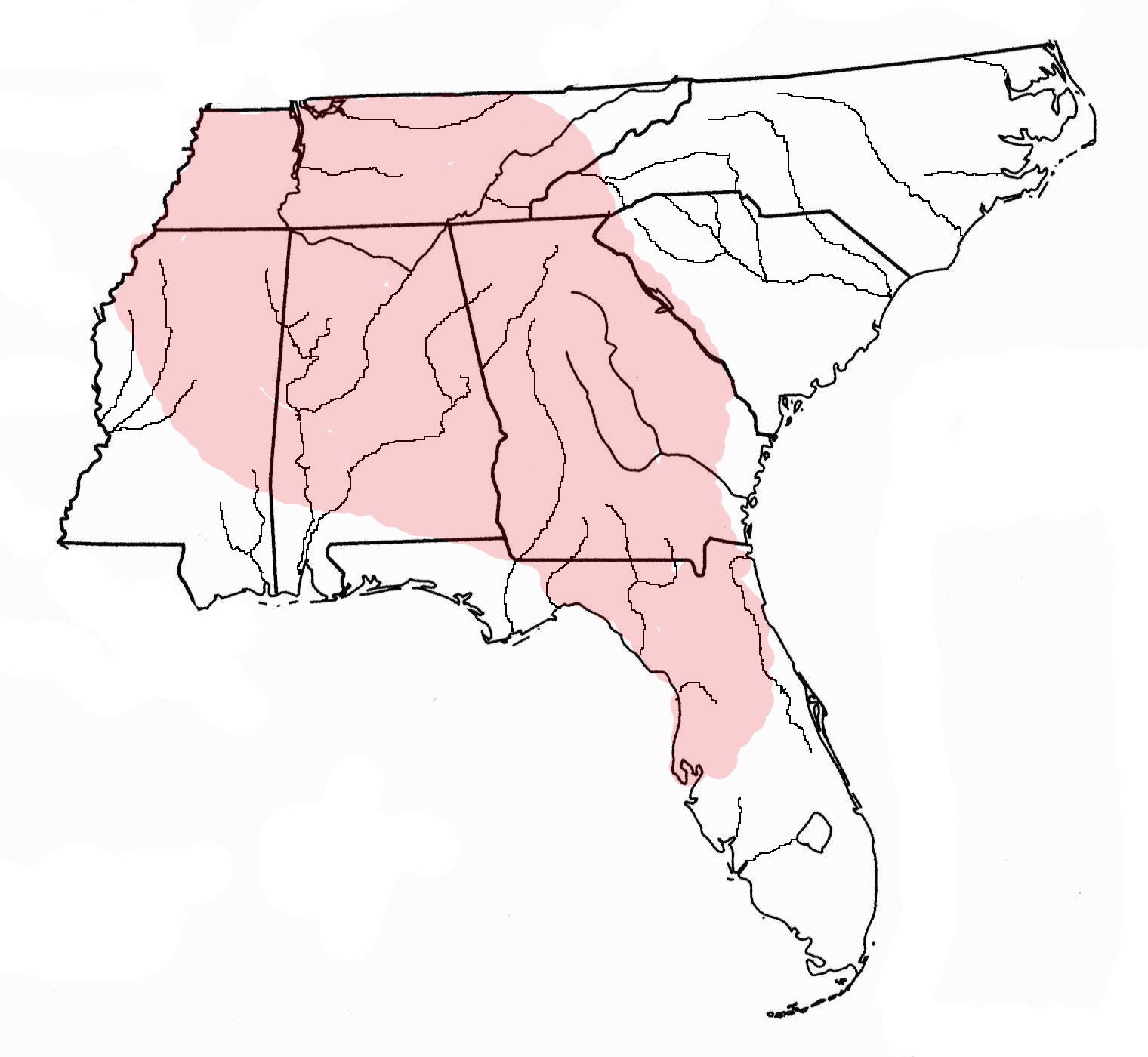Examples a-f are from Georgia.
Name: James Cambron and David Hulse named this type for the Beaver Lake area in Limestone County, Alabama.
Age: The Beaver Lake point has been described as an unfluted Cumberland point and is found on sites that produce Paleoindian types. They were recovered from the deepest level of stratum III at the Flint Creek Rock Shelter site and dates prior to 10,000 BP.
Description: The Beaver Lake is a medium sized point measuring between 1.5 and 2.5 inches in length. The cross-section is lenticular, but one or both faces may have a median ridge and collateral flaking. The blade is recurved and constricted in the hafting area and the distal end is acute. The basal edge is flat to incurvate with rounded auricles. The auricles are longer and the basal edge is more concave along the southern end of the fall line. Smoothing is typical along the basal edge and hafting area.
Distribution: Beaver Lake points range from as far south as the Tampa Bay region of Florida to as far northward and west to the Mississippi River in western Tennessee and westward into the Midwestern states.
